
 topics
topics
 download media
download media
 search
search
| 1500 - 1847 | 1848 - 1919 | 1920 - 1959 | 1960 - 1999 | 2000 - 2020 |
Agricultural Advancement 2000 - 2020













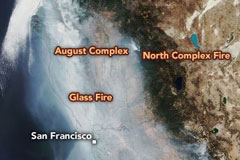





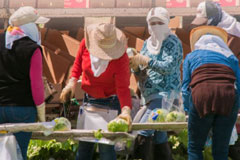








What would you like to find?

Downloadable Media: Agricultural Advancement
Imagery

















Genetic engineering, or the manipulation of an organism’s genes using biotechnology, has had substantial economic and environmental benefits for farmers. Some of these benefits include lower production costs, fewer pest problems, reduced use of pesticides, and better yields when compared to conventional crops.
University of California Television produced a video describing genetic engineering in California agriculture, summarizing the benefits and advances made by genetic engineering. Watch this video to understand the science, and consumer concerns, regarding genetic engineering in the first decade of the twenty-first century.
www.youtube.com/watch?v=Zzh5TVXaAr4
USDA


Genetically Modified Food Fight, 2012-
California’s 2012 election ballot featured Proposition 37, which—if passed—would require genetically engineered food to be labeled as such and prohibit the use of the word “natural” in labeling. The proposition brought up consumer concerns regarding genetic engineering and resulted in an abundance of reports and research on the positives and negatives of genetic modification.
Opponents of the proposition argued that the measure would increase government bureaucracy in the agriculture sector while raising food costs and taxes. Opponents also pointed out that many respected scientific and medical organizations claim genetically modified foods are safe.
Meanwhile, supporters of the proposition argued that consumers had the right to know what was in their food. Supporters also pointed to the requirement for labeling genetically engineered foods in foreign countries, including most of Europe and Japan, claiming that American companies should be required to provide the same information for goods consumed within the U.S.
While Proposition 37 was defeated in the election, consumer concerns and debates over genetically engineered food continued throughout the decade.
Questions
Are genetically modified organisms safe?
Why are consumers worried about GMOs?
Califronia Proposition 37, Mandatory Labeling of Genetically Engineered Food Initiative (2012) ballotpedia.org

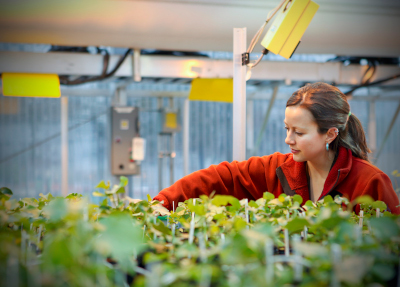
Genetic Engineering, 2000s
University of California Television released a video describing Genetic Engineering in California Agriculture in 2008 summarizing the benefits and advances made by genetic engineering. Watch this video to understand the science, and consumer concerns, regarding genetic engineering in the first decade of the twenty-first century.
www.youtube.com/watch?v=Zzh5TVXaAr4
Questions
How does genetic engineering benefit the agriculture industry?
Are there any negative impacts? What are they?
University of California TV

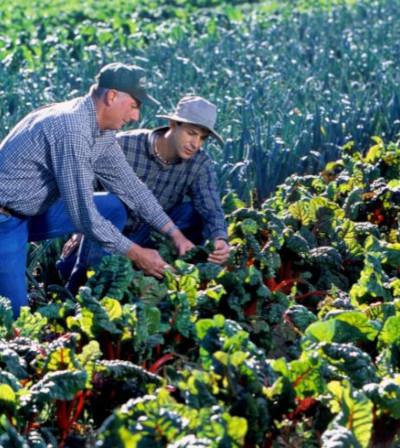
Organic Agriculture Production, 2000s
California’s organic agriculture is overseen by the California Department of Food and Agriculture State Organic Program (SOP) which collects registration information and tracks commodities, sales value, acreage, and area. This information is updated yearly, as it is a part of the requirements for organic production.
Over the last two decades, the demand and availability of organic foods has increased. Many grocery stores have entire organic sections or offer a multitude of options.
Based on SOP data collected between 2013 and 2016:
-
The top organic commodities by sales value included: Milk (cow milk), strawberries, carrots, wine and table grapes, and sweet potatoes.
-
The number of organic agricultural operations increased by 1,000 from 2013 to 2016. There were 3,109 unique operations in 2016.
Another report, released by the SOP in 2020, provided more information:
-
Organic production has increased 44% from approximately 1,796,080 acres in 2014 to 2,590,328 acres in 2019.
-
Sales of organic products in 2019 totaled over $10.4 billion.
Based on the data provided in both reports, trends indicate that organic agriculture will continue to flourish in California. Visit www.cdfa.ca.gov/is/organicprogram/reports to read more.
Questions
Why is organic agriculture increasingly popular?
Is organic agriculture cost prohibitive or accessible?
CDFA
Thanks to advances in technology, farmers have much more information and technology available to allow better, more precise agriculture practices. Instead of applying water, fertilizers, and pesticides across an entire field, the use of technology allows specific targeting, down to the individual plant. In addition, technological advancements have led to higher crop productivity, less water usage, decreased fertilizer and pesticide application, less chemical runoff, and increased worker safety.
https://nifa.usda.gov/topic/agriculture-technology
California Department of Food and Agriculture

Automated Tractors, 2012
The idea of the driverless tractor first appeared as early as 1940, but in the last two decades the concept has evolved into a future reality. In an automated tractor, the machinery uses GPS and other wireless technologies to farm land without requiring a driver.
As the technology for autonomous equipment continues to advance and become more readily available, market reports predict that the demand for autonomous agriculture equipment will be particularly high in the U.S., Germany, China, Japan and a few other markets over the next 10 years.
The agricultural equipment industry has often been at the forefront of advanced technologies—farmers rely on productivity and efficiency to maximize profits. Automated tractors have the potential for more precise planting, spraying and harvesting which can lead to larger crop yields.
This timeline of tractor history illustrates how far tractors have come, and helps readers imagine where they’re headed.
Questions
Why are automated tractors so uncommon?
What incentives could encourage farmers to invest in driverless machines?
SodGod

Cloning, 2001-
Although scientists have been cloning livestock since 1996, the Food and Drug Administration got involved in 2001 when cloning became a commercial venture. Cloning is an advanced form of assisted reproductive technology (other assistive reproductive technologies include artificial insemination and embryo transfer) in which an immature embryo is taken from a female animal and the nucleus of the embryo is replaced with the nucleus from a cell of the donor animal. That embryo is then implanted in a surrogate female, who then gives birth to the clone like any other animal.
The main intention behind using agricultural clones is to produce quality breeding stock by creating more copies of the best animals in the herd, which could then be used for reproducing and continued breeding. According to the FDA, food from cloned livestock is safe to eat, though most cloned animals are used for breeding not eating. However, cloning is not a low-cost option, and many producers choose other assisted reproductive technology over cloning for this reason.
To read more about cloning technology, visit www.fda.gov/animal-veterinary/animal-cloning/primer-cloning-and-its-use-livestock-operations.
Questions
Why isn't cloning a more widespread practice?
What are consumer concerns about cloning?
Food and Drug Administration

Modern Railroad Technologies, 2020
Much of California’s produce, and some livestock, is still transported via trains. These train cars must be refrigerated in order to preserve the consumable items being moved across the country. Union Pacific, the dominant railroad company on the West Coast of the U.S., produced this video, demonstrating the types of technology used in their railroad cars. Nationally, freight railroads moved 1.7 million carloads of food products and 1.7 million carloads of grain and other products in 2020.
Questions
What technologies keep railroad cars cool in modern times?
Is this more cost effective than the icing method of the twentieth century?
California Governor's Office of Business and Admin Logistics and Infrastructure - business.ca.gov ; Union Pacific
The bipartisan, bicameral Rural Caucus was formed in January 2003. This Caucus is responsible for addressing policy issues and concerns of rural areas and communities in California. Because rural areas have smaller populations, they have less voting power and can be overlooked by the State Legislature. The Rural Caucus aims to present a united front to draw attention to rural issues and concerns.
For more information on California’s Rural Caucus, visit rural.legislature.ca.gov.
CA State Assembly
Although farm laborers have benefited from increasing government supervision and public interest regarding treatment and wellbeing, some protections offered in other industries remain out of grasp. California's reliance on farm labor has stayed steady over the last century, demonstrating the necessity and importance of protecting and supporting farm laborers.
"California Agriculture: Feeding the Future" report, published in 2003 by the California Rural Policy Task Force

Farmworker Health Insurance, 2017
According to a 2017 report by the UC Davis Western Center for Agricultural Health and Safety, approximately half of California’s 650,000 farm workers were without health coverage, while the rest received seasonal coverage from their employers or relied on Medi-Cal or Covered California health insurance. The report states, “Part of this challenge is that almost all of California’s farmworkers are foreign born (primarily from Mexico), and approximately 56% do not have work authorization.”
Although the Affordable Care Act requires large agriculture employers, with 50 or more workers, to offer full time employees health coverage, this does not apply for short-term workers. As many farmworkers rotate between employers to follow seasonal crops, they do not qualify for health insurance. Additional issues include the high rate of cost for coverage, which is prohibitive for many farmworker families who have relatively low incomes.
https://aghealth.ucdavis.edu/news/bleak-outlook-california-farmworker-health-coverage-prospects
Questions
Why do so many farm workers not have health insurance?
Why don't employers offer it?
Suzette Smiley-Jewell, "Bleak Outlook for California Farmworker Health Coverage Prospects," 2017, UC Davis Western Center for Agricultural Health and Safety

Farm Labor Statistics, 2003
Agricultural jobs are a vital part of California’s economy. A 2003 report published by the Governor’s Office of Planning and Research stated that seven percent of employment in California, and over 25% in the Central Valley, is directly or indirectly related to agriculture. An estimated 800,000 farm laborers were employed during harvest season.
Visit this link for additional farm labor statistics.
Questions
Refer to the report linked above. What are some other interesting statistics included in the report?
Governor's Office of Planning and Research, California
According to a 2003 report, California was home to 32 freight railroads with a total of 7,600 miles of track. Rail transport is ideal for products with less time-sensitivity and is often more cost-efficient than trucks. In 2001, approximately 11% of the products shipped via rail freight that originated in California were food products.
https://rural.legislature.ca.gov/sites/rural.legislature.ca.gov/files/OPR_report.pdf
"California Agriculture: Feeding the Future" report, published in 2003 by the California Rural Policy Task Force
The rapid expansion of global connections through social media and information technology has made sharing data much easier. A student in California can now communicate with students across the country or the world, or study life in other countries in a much more concrete way. Sharing information about agriculture has also increased exponentially, allowing for more scientific advancements and improvements in quality, yields, and variety of agriculture products.


What the World Eats, 2005
Peter Menzel, a California photographer, and writer Faith D'Aluisio traveled to 24 countries to interview and photograph families to discover what they ate, as well as the weekly cost of their food. In 2005, they published their findings in a book titled Hungry Planet: What the World Eats. Among the photographs featured at this link are two U.S. families, one from California and one from North Carolina.
Questions
Use the photos featured in the link to answer these questions:
What are some similarities you can see in these photos?
What are some major differences you notice?
Why do grocery bills (the amount that food costs) differ so much around the world? What factors contribute to these differences?
The costs of food are based on costs in 2005 - would each families’ grocery bill be higher or lower based on today’s prices?
TIME Magazine ; Peter Menzel and Faith D'Aluisio, Hungry Planet: What the World Eats (2005)
Over the past 20 years, the California Natural Resources Agency has released four Climate Change Assessments to the state’s governor in an effort to warn about global warming and climate change. The impacts of global warming on California, according to these reports, would include:
-
Sea level rise, coastal flooding, and coastal erosion: The rising sea level and associated issues would lead to a loss of property, businesses, and land along the coastline of the state, including agricultural land and businesses.
-
Loss to the Sierra snowpack and water supply: The most important natural storage of water in California, the snowpack melts during spring and summer, when the state’s agriculture and human population needs it most. Higher temperatures meant faster melting, and the potential for flooding and water shortages simultaneously.
-
Higher risk of fires: Climate change would have a significant impact on tree survival and would increase temperatures, leading to drier forests and shrublands. This would create more frequent and more dangerous forest fires.
-
Damage to agriculture: Global warming would cause longer droughts, higher temperatures, saltwater contamination of water sources, flooding, and increasing pest issues. California’s agriculture industry was worth $50 billion in 2019 and provided more than half of the nation’s fruits and vegetables. A large proportion (estimated at 90% total) of the crops harvested in California are grown on irrigated farms, so a loss of water would reduce acreages or shift production away from water-intensive crops. Higher temperatures could cause livestock to eat less, grow more slowly, and produce less milk (in the case of dairy animals)—extreme temperatures could cause death.
For a closer look at the Climate Change Assessments, visit www.climateassessment.ca.gov.
Office of the Attorney General ; United States Environmental Protection Agency

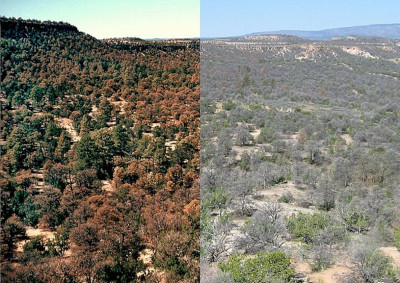
2011-2017 Drought
From December 2011 to March 2017, California experienced a significant drought. The driest period in California history occurred from late 2011 through 2014. The impacts to California agriculture were severe and widespread, and included the loss of millions of trees (including orchard trees), loss of livestock due to excessive heat and lack of water, and additional losses in the food processing and transport industries.
Questions
What are some other consequences of the extended period of drought?
Climate Signals

State Regulation on Livestock Methane, 2016
In September 2016, Governor Brown signed Senate Bill 1383 into law, which allows the state of California to regulate the release of short-lived climate pollutants (SLCPs) including methane, black carbon, and fluorinated gases. Livestock produce significant amounts of methane as part of their normal digestive processes.
Although livestock manure has already been subject to various regulations, SB 1383 will be enacted in January 2024 after a series of regulatory steps. The bill specifically targets a 40% reduction of methane emissions by California livestock manure by 2030. Because the dairy industry is the main contributor of methane emissions from livestock animals and manure, SB 1383 could have a serious impact on the dairy industry.
Questions
How does this bill suggest dairy farmers cut down on methane emissions?
Are the methods proposed by politicians and scientists practical and cost efficient?
Senate Bill No. 1383, California Legislative Information

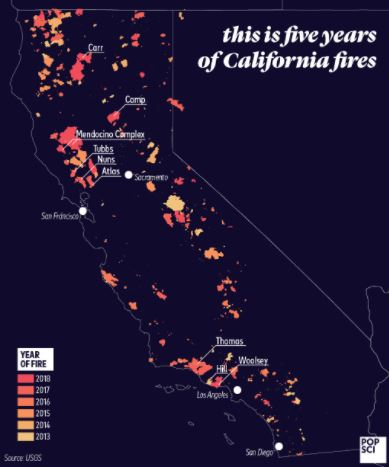
California Fires
The past twenty years have resulted in California’s hottest, most destructive, and most deadly wildfires. In addition to damaged property, such as dairy farms, citrus groves, orchards, and vineyards, wildfires have a long lasting impact on soil health. Unlike a prescribed burn—a healthy burn often utilized by farmers to eradicate weeds or by forest rangers to manage forests from forest fires—a wildfire can yield heat levels above 400 degrees. These temperatures can cause irreversible harm to the land.
Negative impacts are extensive and include destruction of shipping and processing plants, livestock illness or death due to smoke inhalation, and smoke taint to wine and wine grapes. The sum total of the impacts of wildfires on California’s agriculture industry is impossible to calculate, but some of the damages are listed below:
-
Butte County’s 2018 Camp Fire, the deadliest fire in California’s history, caused rangeland losses of 30,000-40,000 acres.
-
In Ventura County, the 2017 Thomas Fire burned thousands of acres of avocado and citrus trees, in addition to 7,000 acres of rangeland.
This video shows images from NASA of what wildfires (the 2018 Camp Fire, Woolsey Fire, and Hill Fire) look like from space.
This link demonstrates the history of California wildfires across the last 70 years, showing the locations and sizes of wildfires.
Questions
Why does California experience so many wildfires?
What other states are effected by fire in this manner?
Hayley Philip, "California Megafires and the Effects on Agriculture", 2019, dirt-to-dinner.com ; Sara Chodosh, "See how much of California has burned in the last five years," 2018, Popular Science popsci.com
Since 2000, California has led the nation in top export earnings for agricultural products, with many products sent to another country for sale. The USDA Economic Research Service created an interactive chart and map that shows the top exports and products for any U.S. state. To check it out, click here.
In 2010, California agricultural exports reached $14.7 billion. Top products included almonds, dairy and dairy products, wine, and walnuts.
In 2019, California agricultural exports totaled $21.7 billion. Top products included almonds, pistachios, dairy and dairy products, wine, and walnuts.
California Department of Food and Agriculture

Livestock Production Economic Trends, 2000-
Over the course of the twenty-first century, livestock production has generally been less economically important in California than in the rest of the country. Nationally, the market value of livestock and livestock products is greater than one-half of total agricultural sales. However, in California, livestock and livestock product sales only make up one-third of total agricultural sales.
Questions
Why does California's livestock production make up less of the agricultural sales overall?
Is it that there are less livestock animals in California, or is it that there are more crops grown in the state?
CDFA

California Dairy Production, 2015
In 2015, California, still the nation’s top milk producer, produced 41 billion pounds of milk, while Wisconsin, the secondary producer, totalled approximately 29 billion pounds, and the next closest states neared 15 billion pounds. A combination of breeding, feeding, maintenance and care processes created the increase in production and associated income for milk producers and dairy farmers.
Questions
Why are California and Wisconsin the highest dairy producing states?
CDFA
According to CAL FIRE, the fire season in California begins earlier and ends later every year due to climate change. Because spring and summer are increasingly warmer, winter brings less snow, and snowmelt disappears more quickly, California faces longer and more intense dry seasons. CAL FIRE tracks all fires across the state and keeps a record of dates, containment, and acreage burned.
In 2020, wildfires across California burned over 4.2 million acres of land and property. Six of the ten largest fires in state history occurred in 2020: August Complex, Mendocino Complex, SCU Lightning Complex, Creek Fire, LNU Lightning Complex, and North Complex. The impact of these fires on agriculture is difficult to estimate and summarize, because in combination with the series of fires and lasting damage, the COVID-19 outbreak further complicated the collection of data. In addition, some areas on the North Coast had previously been burned in 2017 and never had adequate time for regrowth and restoration.
The Impact of Wildfires on California Agriculture Report Informational Hearing contains specific information regarding direct impact to farmers, damages incurred, and suggestions for future policies to prevent wildfires.
California State Assembly "The Impact of Wildfires on California Agriculture Report" published in 2020
The novel human coronavirus disease 2019 (COVID-19) was first reported in Wuhan, China, in 2019, and subsequently spread globally to become the fifth documented pandemic since the 1918 flu pandemic. The first U.S. coronavirus case would be reported in early 2020, and the WHO declared COVID-19 a global pandemic in March.
California issued a stay-at-home order on March 19, 2020. While many anticipated a short period of quarantine, the reality was much different, and many would remain in some type of quarantine throughout 2020 and into 2021. The global pandemic had significant effects on every industry, including California’s massive agriculture market. An initial report based on data collected in April and May of 2020 summarized the immediate impacts of the pandemic on California’s agriculture industry. Some projections included:
-
An estimated loss of approximately $13 billion in output value across the agriculture, processing, shipping, and labor markets;
-
Job losses, especially in rural counties (Kern, Tulare, Imperial, Monterey) and high unemployment rates;
-
Direct costs to businesses, including agricultural businesses, for social distancing, additional cleaning, staggering shifts to reduce proximity of workers, additional sick time, and the provision of personal protective equipment including masks and gloves;
-
Crop losses of fresh fruit and vegetables that did not get harvested due to the pandemic and associated stay-at-home or quarantine orders;
-
Closing non-essential businesses, including restaurants and retail, that regularly sell agricultural products, resulting in loss of income;
-
Runs on grocery stores, resulting in significant shifts in demand and associated attempts to shift supply; and
-
Reduction or cessation of freight movement, causing a significant decline in agricultural exports.
Again, these were projections based on the months of April and May alone—the results of the COVID-19 pandemic and associated restrictions are numerous and continue into 2021.
"Economic Impacts of the COVID-19 Pandemic on California Agriculture," prepared by ERA Economics LLC - published June 16, 2020
Increasing concerns about water availability in combination with climate change have created a growing demand for monitoring and regulating water usage. In 2021, California Environmental Protection Agency’s Office of Environmental Health Hazards published a report on the state’s Community Water Systems. This report also included an interactive map that shows water quality, accessibility, and affordability. Because California is a top producing agricultural state, it is concerning that there appears to be less and less water available.
Use this link to see the interactive map and explore water availability, accessibility, and quality in California: https://calepa.ca.gov/environmental-mapping-tools-and-data/
Ballotpedia ; CaliforniaChoices.org

Hydrology, 2000-
Water is one of our most precious natural resources. Hydrology is the science that encompasses the occurrence, distribution, movement, and properties of water on Earth. Hydrologists apply scientific knowledge and mathematical principles in order to try to solve water-related issues such as quantity, quality, and availability. Agricultural hydrology specifically focuses on water balance components (surface, root zone, and aquifer water balance), especially in irrigation and drainage.
While hydrology has been practiced in some senses for hundreds of years, the 1950s marked a new era in the field as advancements in technology, especially GIS systems, advanced scientific thinking regarding the connections between the structure of the Earth and its water resources.
This field is specifically important to California considering increasing needs for water across the state and concerns regarding water availability for agriculture.
Questions
What motivated the development of hydrology as a scientific field?
What do agricultural hydrologists do?
U.S. Geological Survey


